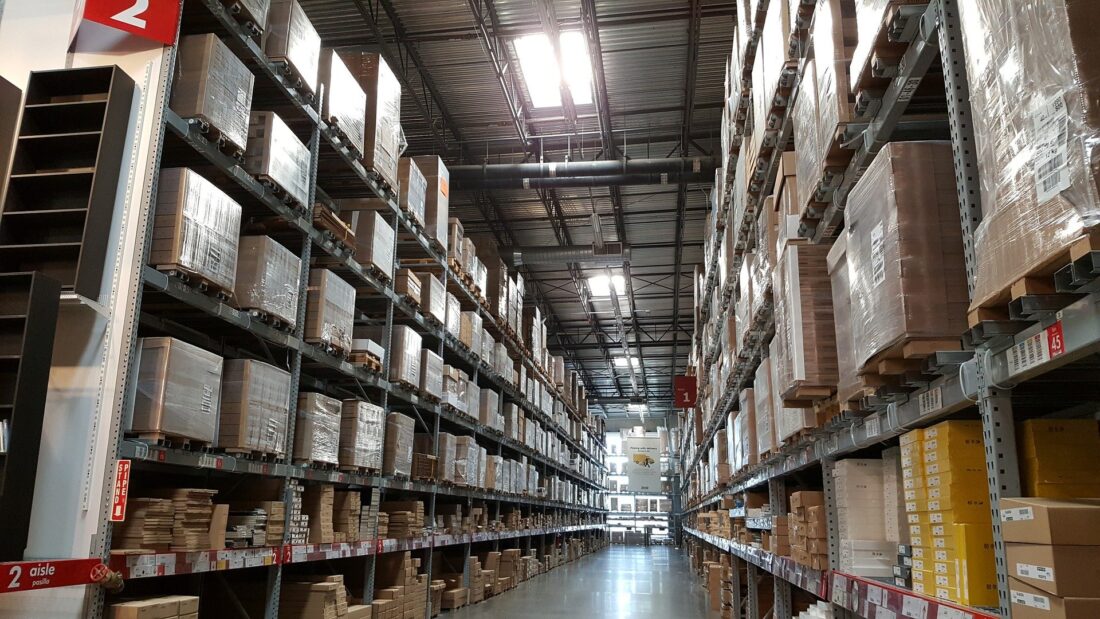 For any business, minimizing operational costs is always the goal. Whether you run a business in the manufacturing sector or manage logistics, warehousing is probably a major part of your everyday operations.
For any business, minimizing operational costs is always the goal. Whether you run a business in the manufacturing sector or manage logistics, warehousing is probably a major part of your everyday operations.
Warehouse efficiency plays a key role in customer satisfaction. Any glitch in your warehouse process, causing long waits will lead to losing customers and ultimately decreased revenue.
In this post, we’re summarizing ways you can reduce warehouse costs and improve efficiency. Let’s get started.
Table of Contents
- 1 1. Streamline Your Processes
- 2 2. Invest in Warehouse Management System
- 3 3. Use Suitable Equipment
- 4 4. Service or Replace Equipment
- 5 5. Optimize Returns
- 6 6. Improve Warehouse Lighting
- 7 7. Train & Re-train Employees
- 8 8. Work on Employee Morale
- 9 9. Manage Theft & Misplacement
- 10 10. Introduce Cross-Docking
- 11 11. Buy Used
- 12 12. Prevent Energy Loss
- 13 The Bottom Line
1. Streamline Your Processes
Take a look at each and every one of your current processes. Do employees have to walk across the warehouse and then walk back just to get one tool? Are there unnecessary steps involved in completing a task? It’s time to reconsider your warehouse layout and streamline processes to eliminate such waste of time and resources.
2. Invest in Warehouse Management System
In today’s digital world, technology is indispensable to optimize your warehousing operations. A Warehouse Management System is a must to have easy and quick inventory levels, supply chains, and other critical information. In addition to saving time and money, a WMS will also minimize errors.
3. Use Suitable Equipment
The right equipment plays a vital role in speeding up various warehousing tasks. Don’t hesitate to invest in suitable equipment that will get the job done easily and fast without breaking down.
4. Service or Replace Equipment
In addition to buying the right equipment, it’s also crucial to keep up with routine maintenance to ensure they work optimally. For example, if the forklift is constantly breaking down, it is important to promptly replace forklift transmission parts to restore efficiency.
5. Optimize Returns
Are your returns all over the place? Make sure your WMS is equipped to efficiently process returns and help you quickly repackage them.
6. Improve Warehouse Lighting
Good lighting is an often overlooked component of a warehouse. Optimal lighting facilitates smooth and uninterrupted operations. Lighting is also necessary to create suitable working conditions for employees, boost productivity, and prevent accidents. Don’t compromise your employees’ health with poor lighting.
7. Train & Re-train Employees
Make sure every employee is well-trained for the job. It’s also beneficial to cross-train employees, so the operations aren’t delayed because of sick days. If you’re adding new equipment or introducing new technology, ensure that employees are accordingly trained.
8. Work on Employee Morale
Creating a motivating and healthy work environment is essential to retain your workforce. You should boost your employees’ morale with monetary and non-monetary incentives to reduce absenteeism. Offering incentives is much more cost-effective than hiring and training new workers. It’s also advisable to hire temporary workers during busy seasons to avoid overworking employees.
9. Manage Theft & Misplacement
Place robust control systems to prevent product theft and misplacements. You should also consider regulating all access points by introducing a key card system to deter unauthorized access.
10. Introduce Cross-Docking
Cross-docking is a procedure for distributing goods directly from the manufacturer to the customer. Using cross-docking can significantly reduce your transportation costs and save storage space.
11. Buy Used
Whether you need a forklift or storage containers, purchasing gently used instead of new equipment is always a cost-saving alternative. This is also a way to practice sustainability.
12. Prevent Energy Loss
Lighting, heating, cooling, and other such amenities are necessary for running a warehouse. But that doesn’t mean you cannot cut down your energy costs. Improve the warehouse insulation and replace inefficient lights with LEDs for increased energy savings.
The Bottom Line
In today’s fierce market competition, your business cannot afford inefficient warehousing. In addition to the above-mentioned tips, it would be helpful to get a professional audit of your warehouse to identify shortcomings and come up with suitable cost-cutting solutions.







